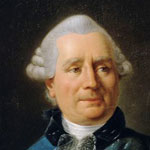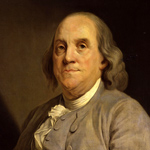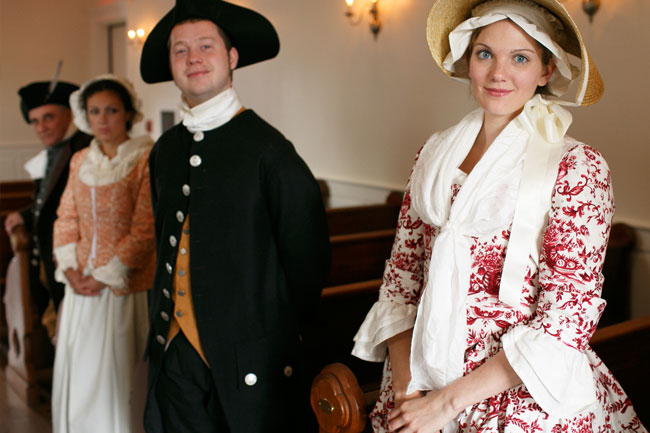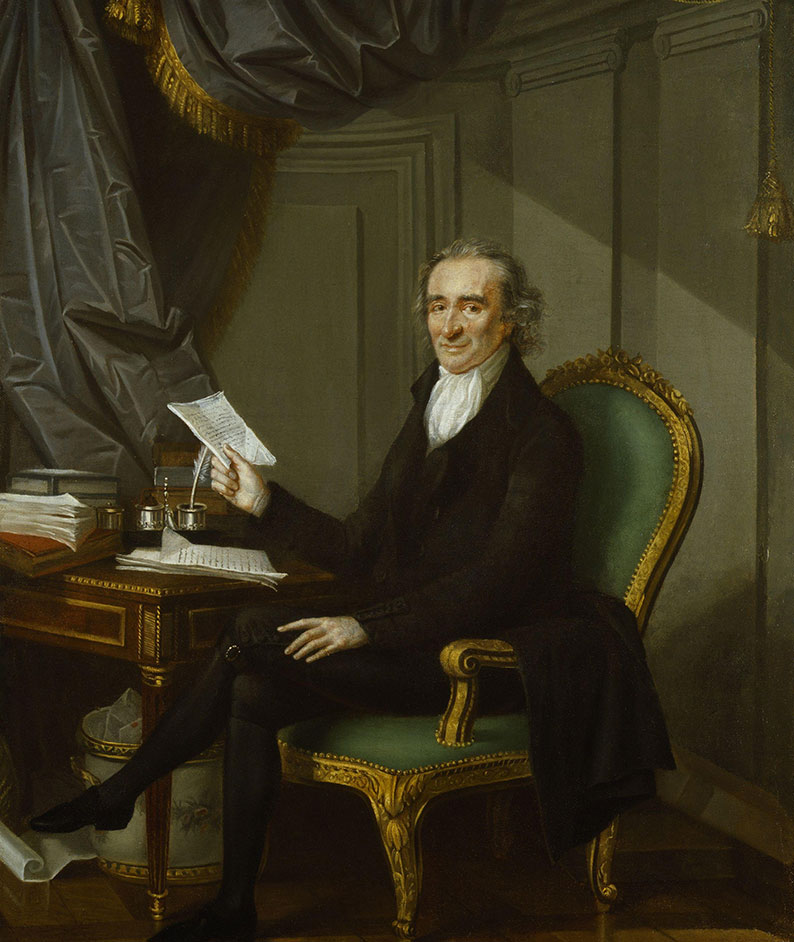On December 22, 1778, John Adams and his son, John Quincy departed for France. They were to sail on the frigate Boston under the command of Captain Samuel Tucker. Captain Tucker was under specific instruction to ensure safe passage for John and his son. Doing so would compel Tucker to avoid combat at all costs, for Adams’ role in the negotiation of an alliance with France was too important to forsake. It was an arduous journey, and on the way they encountered severe weather, and even an engagement with a British warship, Martha which John Adams gave his consent to.
John Adams: Diplomat to France
Adams Arrives in France
On April 1, 1778, Adams finally reached France by way of Bordeaux. When he arrived, he dined aboard a French warship just off the coast with Dr. Noel, a French physician whom Adams grew fond of while aboard the Boston. It was his first impression of the French, and Adams was pleased with their affability. The captain’s cabin, where they ate, was “as clean as in any gentleman’s house.” With Dr. Noel serving as his interpreter, John Adams learned that as a result of General Gage’s victory at Saratoga, the alliance between France and the United States was already secure. The agreement had been signed on February 6, 1778, before Adams had left for France. His mission, to negotiate an alliance with the French was accomplished before he even set foot on continental Europe.
Travelling overland, Adams arrived at Paris on April 8. Exhausted from the journey, Adams slept well through the night. Awaking the following morning, Adams called on Benjamin Franklin to get a full report of his dealings with the French Court. Throughout the day, Franklin kept Adams busy by taking him to a series of social engagements which in no way seemed related to the cause of American independence. This was Adams’ first encounter with the French aristocracy, and it was not at all the pace he was used to.
Franklin Becomes One of the Most Influential People in France
Franklin told Adams that his friends, the most influential people in France, must become his friends too. But Adams quickly realized Franklin had become an influential person himself. As Franklin once bragged to Adams, his face had become as familiar to the people of Paris as the face of the man in the moon. During his time in Paris, Franklin had adopted a homespun look that endeared him to the French. He wore plain clothes and a fur hat, which gave him the appearance of a provincial rustic. In France, Franklin was already legendary, as he was seen as one of the great thinkers from the Age of Enlightenment. Next to the philosophe Voltaire, Franklin had become the most famous man in Paris.
Franklin was so famous in fact, that in 1778 he sat for French sculptor Jean-Antoine Houdon. At the same time, Franklin’s host at the Hộtel de Valentinois, Le Ray de Chaumont, commissioned the artist Joseph-Siffred Duplessis to paint a portrait of his likeness. For the portrait, Franklin wore his fur collared coat, undoubtedly so he would look the part of the American rustic the French adored. Of Duplessis’ work, David McCullough would note that Franklin “appeared perfectly at peace with himself and the world. Admirers saw strength of character in the ‘robust’ neck, [and] unshakable serenity in the slight smile.”
But John Adams and Arthur Lee saw through the façade that Franklin presented. For his part, Adams was frustrated with the lack of progress that had taken place in Paris prior to his arrival. Adams believed that Franklin had grown lazy in old age, and displayed none of the traits that would prove indispensable in securing French aid in the War of Independence. Through time spent with Franklin in London prior to the war, Arthur Lee also despised Franklin, and it was clear to Adams from the day he set foot in France that their differences were irreconcilable. In spite of Adams’ desire to reunite the two statesmen, Lee wanted no part of Franklin. Disillusioned with both Franklin and Lee, Adams wrote “I found that the business of our commission would never be done unless I did it.” According to Adams, Franklin seemed more concerned with his image than the cause of independence. Adams lamented “my countrymen are suffering in America and their affairs were in great confusion in Europe.”
Language Barriers Prove Troubling for the French Court
Even more distressing to Adams was the way the French Court received him. John Adams, while doing his best to learn the language while en route to Europe, could not converse with the French ministers in their native tongue. French was the international language of diplomacy, and the Comte de Vergennes was astonished that Adams knew not a lick of the language. It would prove to be the beginning of a rocky relationship between the French Foreign Minister, and the American diplomat. Vergennes was very fond of Franklin, but had a strong distaste for Adams. This would eventually prove to be the undoing of Adams’ career as a diplomat in France.
A Global Naval War Between Britain & France Begins
After France declared war on Great Britain, it became apparent that there would be a global naval war between the British and the French. In the summer of 1778, a naval expedition led by Charles-Henri Theodat d’Estaing, combined with American land forces, failed to capture Newport, Rhode Island. To Adams it was obvious that more from the French would be needed—specifically, more warships and coordination with American soldiers on the ground. In December of 1778, Adams with the help of Franklin drafted a letter to Vergennes stating this point, although Franklin toned down the language considerably. According to Adams, “Such a naval force, acting in concert with the armies of the United States, would in all probability take and destroy the whole British power in that part of the world.”

Vergennes never accepted the letter. To Vergennes, he believed that Adams overstepped by telling him how France should conduct her war against Great Britain. In all likelihood, Vergennes was concerned with protecting French merchant fleets from British warships, and did not want to send too many warships to the United States only to leave the coast of France exposed. Perhaps Adams was unaware of Vergennes’ difficult situation. Nobody in the French Court was a stronger supporter of American independence. He almost singlehandedly convinced King Louis XVI that military support of the Americans was the right course of action, but not on the grounds of liberty. France was ruled by an absolute monarch, and the Comte de Vergennes convinced the French Court to join the war as it would open up a new market for French merchants. In fact, by joining the war, the French government sank further into debt. There had to be an economic advantage for France to join the war against her old rival.
Congress Dissolves the American Commission to France
Little did Adams know that earlier in the year, Congress agreed to dissolve the American commission since the alliance with France had already been finalized. The official packet from Congress did not arrive until February 12, 1779. Franklin was appointed minister plenipotentiary to the Court of King Louis XVI, Arthur Lee was dispatched to Madrid, but John Adams was left with no further instructions from Congress. While Adams always believed that Franklin would be chosen for the task, and publicly showed his support of Franklin, he was at least privately very upset over the appointment. Perhaps most insulting of all was that Adams was given no further appointments from Congress. It seemed as though his friends had forgotten his existence.
The Devaluation of American Currency Stirs Controversy
In the year that followed, Adams actively ostracized himself from Franklin and the Comte de Vergennes. While he had no official appointment to the court, he continued to voice his opinions on how the alliance between the United States and France should be drawn up, and how the French should conduct their military operations in the North American theatre. It was his unrelenting vociferousness that eventually got him into trouble. Vergennes and Franklin were growing tired of Adams. Then on June 16, 1780, Vergennes saw his opportunity to finally oust Adams once and for all. Adams informed Vergennes that Congress had decided to devalue the American dollar in order to solve the problem of inflation. Vergennes responded by telling Adams that it was not in the interest of French merchants, and that if Congress wanted to hold Comtes de Vergennes, the French Foreign Minister, by Antoine-François Callet on to the Franco-American alliance, they must restore the value of their currency. Vergennes instructed Adams that he must inform Congress of his decision, and predictably, Adams refused.
Instead, Adams wrote to Congress of his support for the devaluation of the currency. On July 29, Vergennes informed Adams that he would only deal with Franklin, the appointed minister plenipotentiary to the Court of King Louis XVI—Adams would be ignored. Even Franklin was dismissive of Adams. In a letter to Congress dated August 9, 1780, Franklin observed that “Mr. Vergennes, who appears much offended, told me yesterday that he would enter into no further discussions with Mr. Adams, nor answer any more of his letters…” But by the time Franklin’s letter came to light, Adams was already in Holland, attempting to secure a loan to, in his words, “render us less dependent on France.”
Adams Negotiates in Holland
In the span of a year, Adams accomplished little while in Holland. This was in part because the Dutch government at The Hague had not formally recognized the United States as an independent nation, and reasonably so. The Dutch economy depended heavily on trade with the British, and it was widely believed that a war with Britain would all but shut down Holland’s fleet of merchant ships—crippling her trade. Adams met with several bankers who expressed a willingness to offer the United States a loan, but never was Adams called upon by any member of the Dutch government.
Then in 1781, news of Washington’s victory at Yorktown reached Europe. General Cornwallis had been surrounded by Washington’s force on land, and with his back to the Chesapeake Bay, his escape was blocked by the arrival of Admiral de Grasse and his fleet of French warships. Nearly 8,000 British soldiers surrendered to Washington in what was the greatest victory of the war for the Continental Army. The war seemed all but over. It was at this time that the possibility of securing a loan from the Dutch now seemed realistic. With the help of Joan Van der Capellen tot den pol, a sympathizer with the American struggle for liberty, John Adams was received at The Hague. On April 19, 1782, Holland formally recognized the United States as an independent government. This paved the way for Adams’ mission of securing a loan. Shortly thereafter, on June 11, 1782 Adams fetched a loan of 5 million guilders, or $2 million U.S. dollars. Adams was pleased with his success. “If this had been the only action of my life,” Adams wrote to Abigail “it would have been well spent.”
The Treaty of Paris
Then in September of 1782, Adams received a letter from John Jay who was in Paris. Jay informed Adams that the British emissary, Richard Oswald, had informed him that the British were looking to sue for peace. Adams was to return to Paris immediately, where such a treaty could be discussed and signed. On November 30, 1782, Oswald and the American delegation signed a preliminary treaty to end the war. It was a separate peace that they signed with the British, but as independence was the chief goal of the American commission, the treaty was signed regardless of the French Court’s opinion. Franklin would be left with the difficult task of breaking the news to Vergennes. The Treaty of Paris, which ended the American Revolution and hostilities between France and Great Britain, would be signed on September 9, 1783.




